|
On 12 March 1936 the Home Office requested that the Royal Mint look into designing a lapel badge for people who had volunteered for the various Air Raid Precautions services. During April and May of 1936 various committees reviewed several designs for the badge. The silver Air Raid Precautions (ARP) lapel badge that was adopted was designed by the sculptor Eric Gill from a design submitted in April 1936. Gill was paid three guineas (£3 & 3 shillings - about £210 in 2018) in January 1937 for his design. A renowned typeface designer (amongst other skills) Gill utilised large capital letters with a slightly more prominent 'R' and two interpoints (dots). Above the ARP initials Gill placed the standard Tudor (King's) crown which also appears on army, air force and navy insignia. By mid June 1936 the Royal Mint advised they could produce a hallmarked silver badge at 1 shilling and 3 pence (1s.3d) each if an order for 50,000 was received. The Air Raid Department at the Home Office then advised the Royal Mint that they would potentially require half a million badges and requested a lower price per badge. On 25 August 1936 the Home Office ordered 250,000 silver buttonhole ARP badges from the Royal Mint. One thousand badges cost £12.17.6 (twelve pounds, 17 shillings and sixpence) to make (hallmarking was extra) and between 7,000 to 10,000 could be delivered per week. The presentation boxes were priced at 7d per thousand. By late November the cost of silver had risen and 1,000 ARP badges now cost £13.4.2. The first run of 250,000 die-stamped badges produced were made with the half-moon style button hole lapel fixing and were available from April 1937. Though they carry the silver date mark 'A' that corresponds to 1936, this hallmark was used until the end of May 1937. 50,000 badges with brooch pin design for ladies was requested in early February 1937. Badges were issued in a cellophane packet and men received their badge in a red box whilst ladies received theirs in a blue box - boxes supplied by the Stationery Office. All the badges produced between 1936* and 1939 were die stamped 925 sterling silver and measure 1 ½” down by 1” across (approx. 39mm by 26mm) and weigh approx. 9 grams. Miniature silver versions of the ARP badge for manufactured for wear on civilian clothes showing the person was 'doing their bit' for the war effort. Dates on silver hallmarked badges: 1936 (A), 1937 (B), 1938 (C) & 1939 (D); some sources claim there is a 1940 E-dated silver badge but no photographic evidence has yet come to light and in over 20 years collecting badges I have never seen one. The badges were announced by Home Secretary Sir John Simon, in Home Security Circular 701582/10 dated 23 February 1937 for issue to "persons who volunteer for ARP services and who undergo the necessary training". The following could be issued the new badge: i) first aid and medical services; ii) rescue or demolition services, iii) decontamination of material; iv) air raid wardens; v) gas detection officers Police officers, special constables and members of fire brigades were not to receive the badge. The badges were issued by the Home Office to local authorities which in turn issued them to people who had volunteered and completed ARP training. By October 1938 the Home Office asked for authority to increase the number of badges ordered to 950,000. By February 1939, over 800,000 badges had been issued. In 1939, the Home Secretary, Sir John Anderson (whose name later became synonymous withe the Anderson Shelter) explains to Parliament the badge: "The air-raid precautions badge is intended as a recognition of the obligations undertaken by persons who volunteer for local authorities’ and other air-raid precautions services and persons who take special courses of training in order to enable them to carry out their normal duties under war time conditions are not, merely by reason of their having undergone such training, eligible for the badge." It was a criminal offence under the Civil Defence Act 1939 and punishable with a fine not exceeding £20, if an unauthorised person was caught wearing the official ARP badge. For war economy reasons from February 1940 the ARP badges were made in "German silver" - usually 60% copper with 20% nickel and 20% zinc (thus no actual silver) by commercial manufacturers such JR Gaunt and Marples & Beasley. Both half moon and brooch varieties were manufactured. Silver type badges were designated "Badges and Brooches No.1" and the German Silver badges "Badges and Brooches No.2". The German silver badges were presented in smaller presentation boxes (most likely due to wartime restrictions). Cost of replacing a lost badge was 1 shilling and 3 pence (1s/3d) for silver and 6 pence (6d) for German silver badges. Local authorities were instructed to maintain a list of people to whom the badge had been issued. The local authorities were also requested to send to the Home Office a list every three months of newly awarded badges (on ARP (Supply) Form 20 (name and address of recipient) & 20A (name and address of people surrendering the ARP badge)). However, it appears that a number of authorities did not complete this request and records were therefore patchy. The requirement to send this information along was later ended. From 1941 the ARP badge was authorised for wear on the newly-issued Civil Defence berets for male wardens. Female wardens had already been wearing them (unofficially) on their felt hats for some time. As part of Home Security Circular No.49/1943, to further reduce metal use, the issue of ARP badges ceased in March 1943. For members of the civil defence services that did not have a metal badge, small printed badges featuring the CD letters in a circle were issued and sewn onto berets. Unofficial Miniature ARP BadgeA number of manufacturers produced smaller versions of the badge in both sterling silver and base metals. Sir John Anderson commented on these to the House of Commons in June 1939: "I am aware that miniatures of the ARP badge are on sale in various quarters. No official permission has been given for such reproductions of the badge, but I am advised that their manufacture or sale does not contravene the law as it at present stands. In those instances which have come to notice, steps have been taken to enlist the co-operation of the vendors with a view to ensuring as far as practicable that miniatures are supplied only to persons who can furnish evidence that they are entitled to wear the official badge. I am considering whether any further action is desirable." Royal Mint Silver ARP Badge HallmarksThe silver hallmarks found on official ARP badges are as follows: Silversmith's initials:
Leopard's head - London (and Goldsmiths’ Company) Assay Office hallmark. Date letters - A (1936), B (1937), C (1938) & D (1939) It would appear that C-dated badges appear most often, followed by D then A. B appears to be the least seen variety. The hallmarks on the unofficial miniature ARP lapel badges will reflect the location of the maker. Birmingham marked badges will be marked with their date letters - for example 'O' for 1938. * Although the date letter of A that appears on silver ARP badges corresponds to 1936, in actuality this date letter was used between 29 May 1936 and 28 May 1937. It was not until the Hallmarking Act of 1974 that each new hallmarking date changed to 2 January. Overseas variationsThe same design of ARP badge was also issued in several overseas territories. Each area would add their own scroll below with the name of the locality - examples include Malta, Hong Kong, Kenya and the Straits Settlements (issued to wardens in Singapore, Penang Malaya and Malacca Malaya). How much do silver ARP badges cost?Given that over a million silver ARP badges were made they are not rare items. In the past I picked them up for a few pounds. Generally you can buy them on eBay for under £10. At militaria events the cost is usually more like £10 - £25. Vintage shops and antiques outlets with a single badge usually sees the price shoot up and vendors asking ridiculous amounts up to £40 or more. The non-silver versions should be much less but I have heard some sellers claim they are rarer than the silver and thus worth more which is complete twaddle. They should be under £5. Unofficial silver ARP badges usually sell for between £6 and £15 on eBay.
The rarer overseas silver ARP badges are very collectable. A Chinese hallmarked silver ARP badge made over £600 in August 2019. Other versions like the Straits Settlements often reach in £60 plus. Alas, the growing prices has led to a number of fake badges being cast - see this page on fake and reproduction badges being sold as original.
12 Comments
Nicholas
2/17/2020 08:46:29
Hi,
Reply
Craig Smith
2/17/2020 10:59:53
Timken is the name of a company that manufactured bearings. Your badge is probably a factory ARP badge issued by the company during the war. Timken was an American company but had factories in the UK from the 1920s.
Reply
David Molyneux
7/9/2020 14:21:12
We have an ARP badge with V A underneath it. Does anybody know what this VA stands for.
Reply
Website owner
7/9/2020 14:32:51
Please use the "Contact" link above to send me a photo of this badge. Thanks
Reply
John Murdoch
12/29/2021 10:21:23
I presume this is the Vickers-Armstrong silver industry ARP badge with an intertwined 'V' & 'A'. The intertwined letters are sometimes misinterpreted as Armstrong-Vickers!
Reply
Website owner
12/29/2021 11:31:28
Indeed - but make sure you add an 's' at the end of Armstrong as the company was called "Vickers-Armstrongs Ltd."
John Murdoch
12/30/2021 10:37:27
Vickers-Armstrongs Ltd versus Vickers-Armstrong Ltd.
Reply
Website owner
12/30/2021 11:55:11
It's currently unknown to which of the two companies the badge was issued. Jon Mills "Doing Their Bit" book notes it as issued to "Vickers-Armstrong" (page 46, Industrial ARP). The badges have Birmingham and 1938 hallmarks but it doesn't assist in determining which company ordered them, or if indeed the same badge was issued to ARP services in both. It appears both companies utilised an intertwined V and A monogram.
Brian allen-ross
3/17/2021 20:33:33
I have an ARP badge with a serial number on the front bottom part C1692 I have 8 other but no number on the front only the one so why this number please
Reply
Website owner
3/17/2021 21:16:55
Some local authorities decided to number the ARP badges they issued with a unique number. This would tally with a record of who received each badge. Volunteers who left the ARP were meant to return their badge if they resigned/left the Wardens' Service.
Reply
Darren Sutton
4/8/2021 01:32:22
My grandfather willed these on to me with his coin collection when he passed away. They were recently stolen when I had my belongings in storage (along with a long list of other items).
Reply
Website owner
4/8/2021 08:11:51
There was initially a procedure to record all recipients of ARP badges. Every local authority was to send in a form to the Home Office containing the names and address of people who had received the ARP badge. However, this requirement was later abolished and none of the original lists appear to have survived.
Reply
Your comment will be posted after it is approved.
Leave a Reply. |
Please support this website's running costs and keep it advert free
Categories
All
Archives
June 2024
|
|
|
Copyright © 2018–2024
|
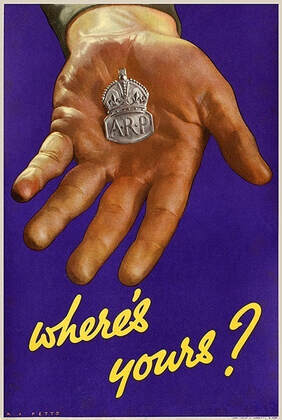
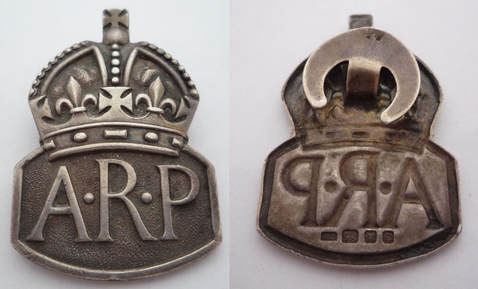
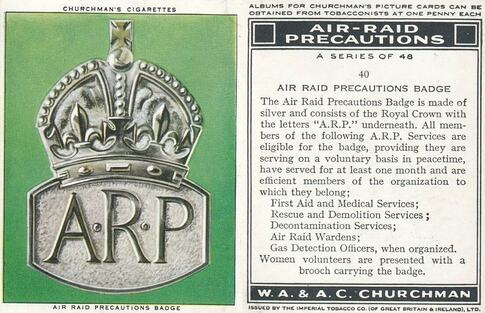


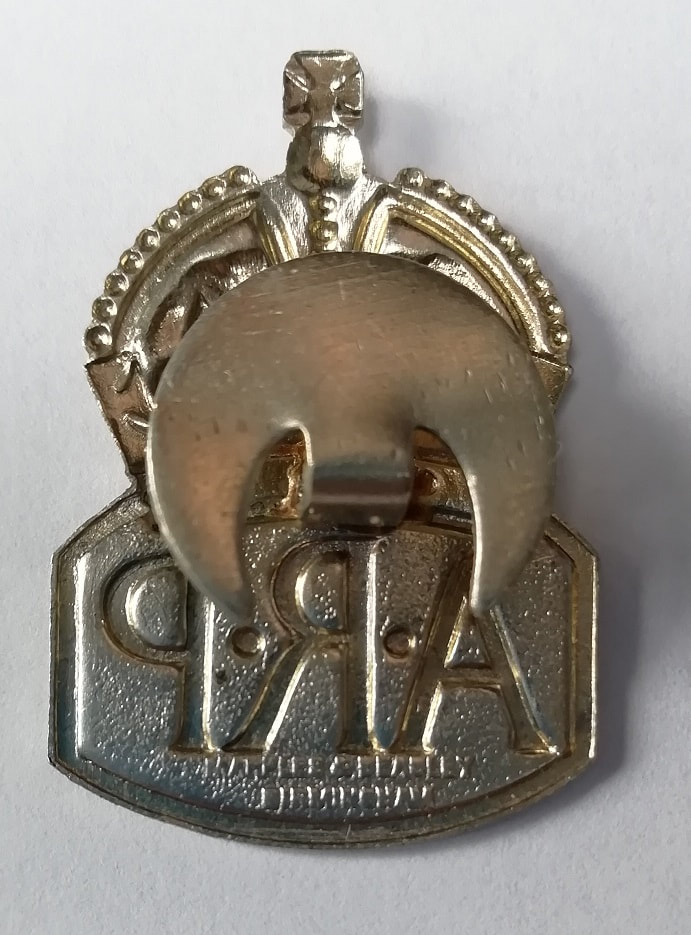

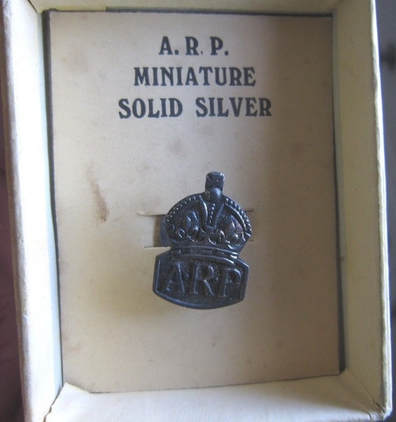
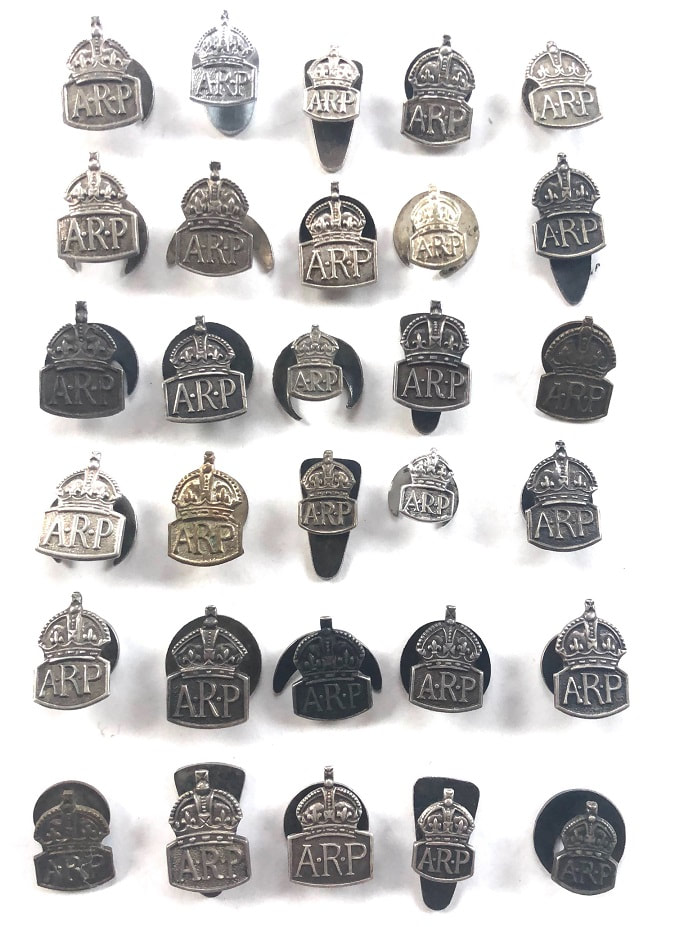

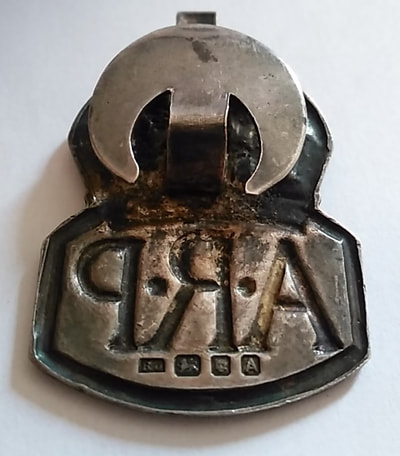

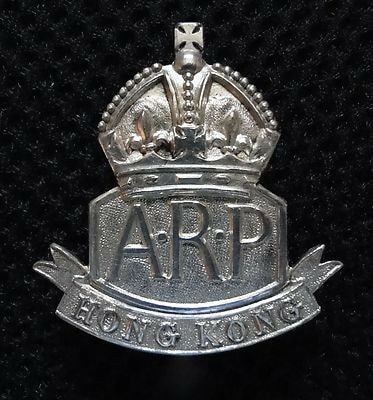
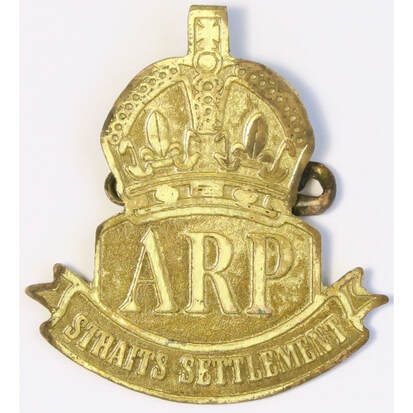
 RSS Feed
RSS Feed